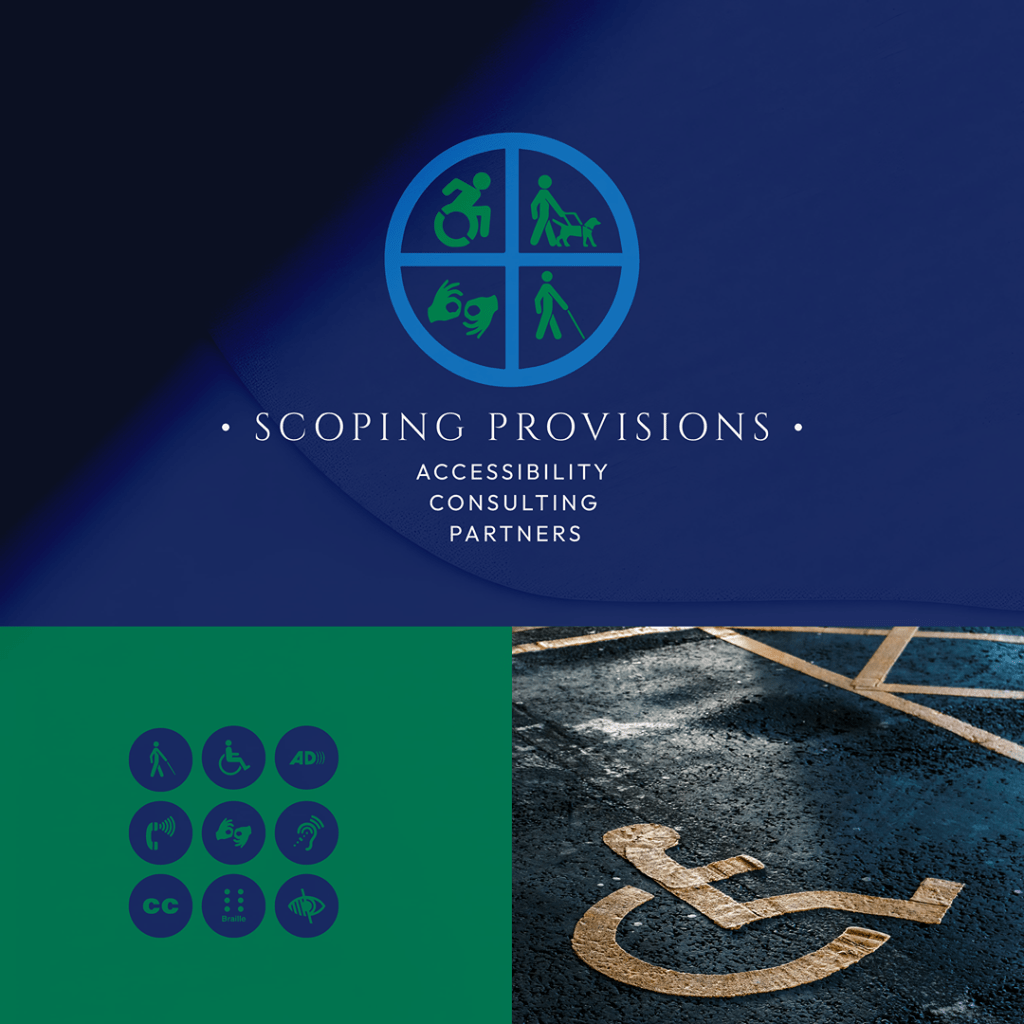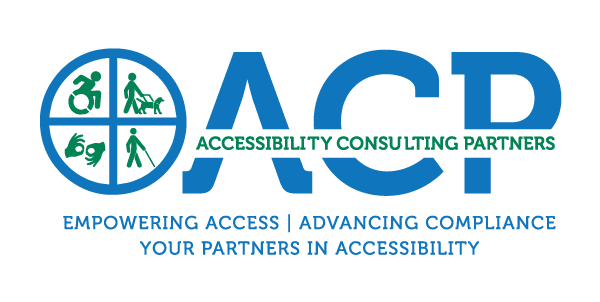
Accessibility Consulting Partners, Inc.’s (ACP) goal is to inform the public about the intricacies and nuances of the ADA and our mission statement: Empowering Access & Advancing Compliance. In pursuit of this goal, ACP commits to highlighting frequently overlooked or misinterpreted ADA requirements.
Scoping Provisions (Chapter 2 of the ADA) apply to various elements and specialized rooms/spaces covered by the ADA. This is particularly important in new construction; it also applies to existing facilities undergoing an alteration.
- Architectural and Engineering Professionals often overlook scoping provisions.
- Many design professionals focus on clarifying an element’s technical dimensional requirements noted in Chapters 4 – 10 of the 2010 ADA. However, if the first section of Chapters 4 – 10 contains a Scope section, it is essential to review the referenced Chapter 2 Scoping section to make sure all scoping requirements are addressed for compliance. As an architectural or engineering professional, you may likely be doing your clients a disservice by not informing them of these ADA requirements. If your clients find themselves involved in ADA litigation, your likelihood of being included in litigation significantly increases as the client’s noted design professional.
- Scoping provisions contain “exceptions,” which are specific sites, buildings, facilities, and elements exempt, but only to the extent specified by 2010 ADA Standards Section 203.
- Chapter 2, Section 203 identifies general exceptions applying to 13 specific area/room/space/element types.
- Employee Work Areas are one of these areas that are often misinterpreted. However, the only ADA requirement for individual work areas is the ability to “Approach, Enter, and Exit” the work area. These provisions apply to those areas where only work is performed by employees. Additionally, individual work areas are required to be served by an accessible means of egress, as required by the International Building Code.
- What does one do if an element doesn’t have specific scoping requirements?
- When elements are intended for public or employee common use (not used specifically for working purposes) and do not have specific scoping requirements, all of these elements would be required to be accessible. Typical requirements for such elements include providing an accessible route to the element, a Clear Floor Space (30×48 min.) at the element, and the highest operable part must be located at a reach range between 15″ – 48″ above the finished floor. These requirements can be found in Chapter 3: Building Blocks (2010 ADA Standards, Chapter 3: Building Blocks) of the 2010 ADA Standards.
As a business owner, it is highly recommended to familiarize yourself with the 2010 ADA Standards and the potential consequences of not complying with its requirements. As frustrating as it may be to some people, the ADA is only enforced by the Department of Justice. That means the ADA is enforced via lawsuits filed by qualified individuals with disabilities. It is essential to understand that the ADA is a civil rights law with architectural implications. Under the ADA, plaintiffs generally allege discrimination on the basis of disability resulting from a lack of access to the goods and services being offered to the public.
Understanding that “access to the goods and services” you offer to the public is a minimum requirement of the ADA. You will quickly realize that your accessibility compliance efforts are not only Empowering Access for the public but increasing your business’ exposure to potentially new clients, customers, or employees.
Scoping provisions are one of many requirements of the Americans with Disabilities Act. Correcting misinterpreted or overlooked scoping provisions can result in substantial time, effort, and expense to bring into compliance if a court orders it. For this reason, it is advantageous to familiarize yourself with applicable ADA standards before making alterations to an existing facility or constructing a new facility.
